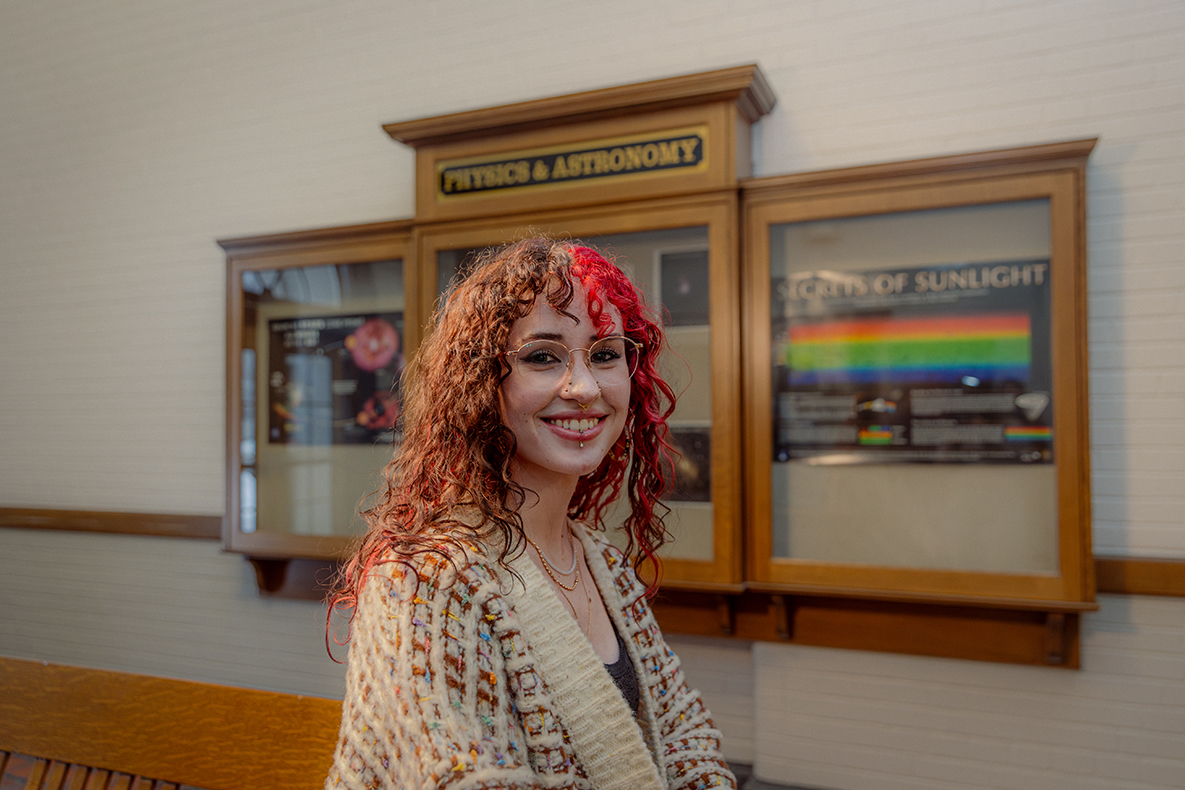Kira Richards loves physics. So much so that she switched her double major in Spanish to a minor to spend more time with her favorite subject.
“I realized any time that I had to do Spanish homework, I was like, ‘Oh man, I could be doing physics right now,’” she said, laughing.
So, when Richards (‘25 physics) got a chance to spend an entire summer in New York with a new, two-story, 1,000-ton, state-of-the-art particle detector, she didn’t hesitate for a second.
“I was so ready to go,” she said.
Expectations exceeded
The incredible experience unfolded because Richards stopped by an Iowa State professor’s office last spring. All she wanted was a bit of advice about how to gain research experience. But when you’re a Cyclone, even the most casual conversations can lead to jaw-dropping opportunities.
“I was like, ‘No way! Really?’ I just wanted to talk. I really wasn’t expecting that,” Richards said.
The summer position aligned perfectly with her passion for particle physics and provided a rare chance to contribute to a national lab’s decade-in-the-making milestone.
Tiny particles, big questions
Located in Upton, New York, Brookhaven National Laboratory is home to seven Nobel Prize-winning discoveries and the Relativistic Heavy Ion Collider (RHIC), a world-class particle accelerator. As the RHIC smashes particles together, the new detector sPHENIX takes data on about 15,000 collisions per second.
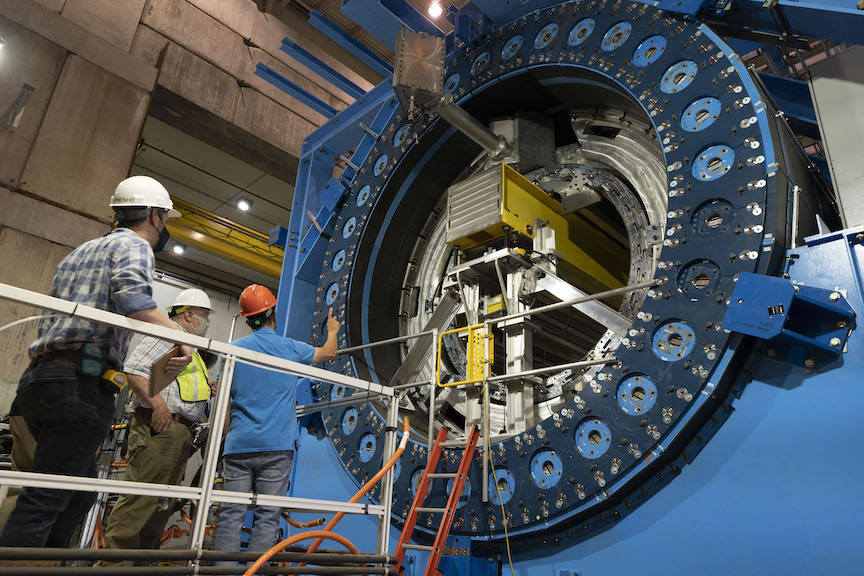
sPHENIX is a highly anticipated upgrade of an older detector called the PHENIX experiment (Pioneering High Energy Nuclear Interaction eXperiment). Iowa State physicists have participated in that experiment since the 1990s and helped manufacture new hardware in Ames for the upgrade.
With sPHENIX, scientists plan to probe the secrets of quark-gluon plasma, a liquid-like mix of quarks and gluons that filled the universe in its first moments after the Big Bang. Unraveling the mysteries of these tiniest pieces of matter could one day produce unimaginable discoveries.
Accelerating her impact
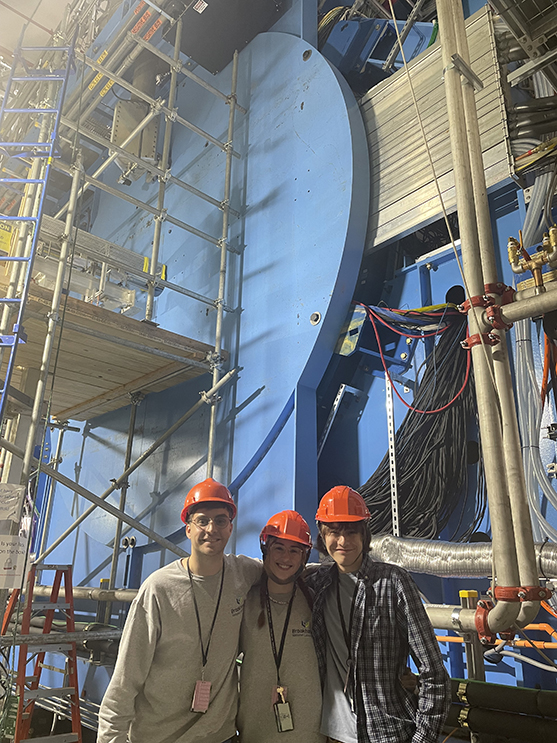
Commissioning was the final stage to check that the new detector was working as expected and ready to run real data. Richards, fellow Iowa State undergraduate Roman Sapp (‘25 physics), and Iowa State physics graduate student Pedro Nieto Marín all helped calibrate a main part of the detector called the electromagnetic calorimeter.
The electromagnetic calorimeter tracks the energy of electrons and photons during their collisions, Richards explained. When a particle hits a light-sensing fiber, the collision produces measurable data through electric signals. Richards helped hunt for unhelpful background noise, called pedestal data, that could clutter results.
“Background noise is all noise that interferes with data-taking, including disturbances from electronics and ‘cosmic’ data, or noise from space,” Richards said.
Throughout her summer, Richards learned new skills in coding and analysis and presented data weekly to a team called the Electromagnetic Calorimeter Commissioning Group. The team’s technicians and engineers used her data to troubleshoot problems in different sectors of the detector to lower background noise as much as possible.
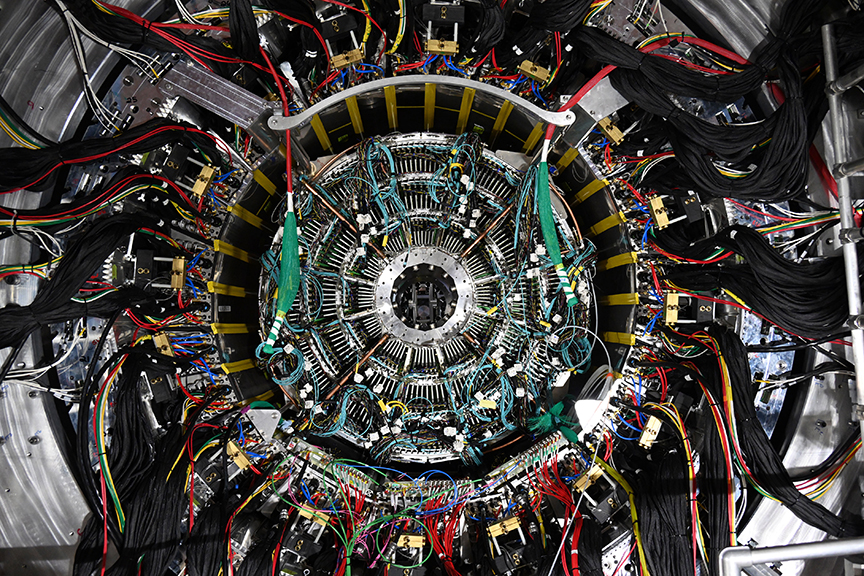
Richards said that contributing to the team’s efforts was rewarding, and she gained a new appreciation for the global collaboration essential to physics research.
“In high-energy physics, you’re not involved in every single step, and some people don’t like that,” she said. “I think it’s cool. I like the community.”
Opportunity of a lifetime
Designing and constructing an experiment like sPHENIX can easily take a decade, followed by years of data-taking, said Marzia Rosati, professor of physics in Iowa State’s Department of Physics and Astronomy. Rosati began working on the proposal for sPHENIX in 2010 and has been involved with the original project, PHENIX, since 1991.
Nuclear physicists might only be involved in a handful of these projects in their career, and it’s not the norm for undergraduates to be involved on site.
“It is fairly rare for an undergraduate to be able to participate in these large collaborations and work at a national laboratory where the experiment is taking place,” Rosati said. “Most undergraduates work remotely at their home institution.”
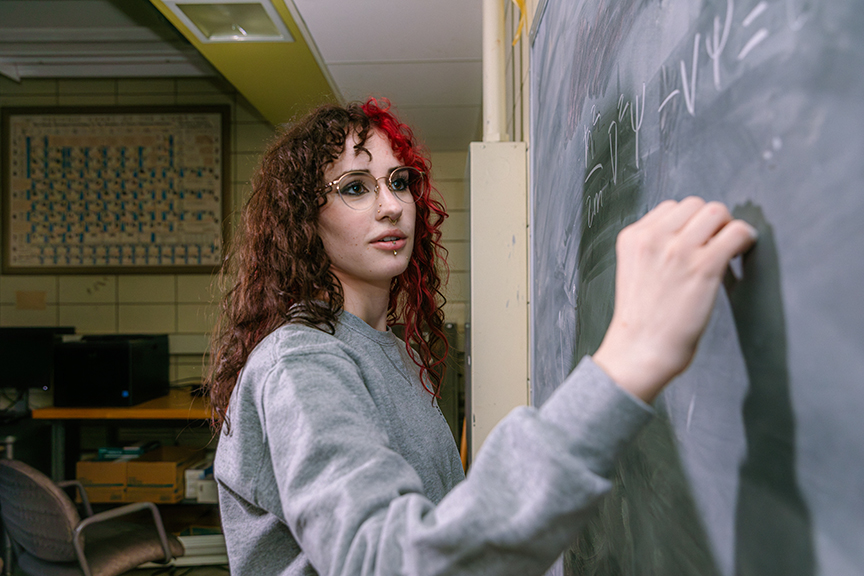
Rosati said Richards’ drive to learn and ability to communicate helped her be successful at Brookhaven and the experience can carry her forward into any career she chooses.
“Kira is very talented, so I hope she is inspired to continue her studies into an academic career in physics,” Rosati said.
Passion detected
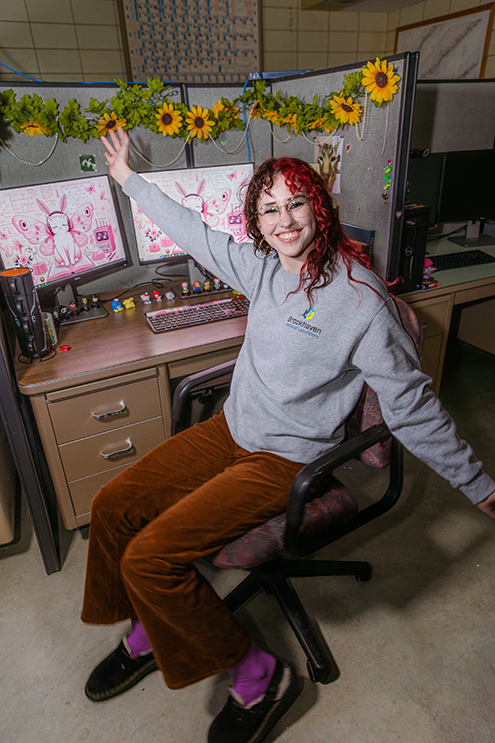
A native of Illinois, Richards grew up in a home passionate about science. Her parents both hold degrees in geology, and her dad teaches high school physics. Richards always loved math, but it wasn’t until her AP Physics classes that she found a love for nuclear and quantum physics.
“We did a double-slit experiment, which is a super common first quantum experiment you can do,” she recalled. “I was like, ‘Oh, no way, this is so cool. I have to do this now.’ So here I am.”
At Iowa State, Richards discovered she not only enjoyed physics but also liked the major’s sense of community. She found instant connections through groups like the Physics and Astronomy Club and her first-year learning community.
“You don’t really think about that part of the major you’re choosing, besides like, ‘Oh, I just like physics,” she said. “It’s very great to be in a place where I feel like they care about the physics majors and our success. That is reflected in the experiences that we get to do.”
From one Cyclone to another
Support also arrived through a scholarship, when Richards received her department’s Bernice Black Durand Undergraduate Research Scholarship last spring. Along with earning a financial stipend for research, Richards became part of a meaningful Cyclone legacy.
The late Bernice Black Durand (‘65 physics, Ph.D. ‘71 physics) grew up in Ames, where Iowa State scientists had an early influence on her life. A theoretical physicist at the University of Wisconsin-Madison and LAS Dean’s Advisory Council member, Durand was devoted to increasing the participation of women and underrepresented groups in science.
"It’s very great to be in a place where I feel like they care about the physics majors and our success.”
Her endowed scholarship does just that – and what’s even more special for Richards is that Durand also did research with large particle accelerators at national labs.
Making a difference
Richards said she never imagined becoming a Cyclone would lead to seeing a particle detector – let alone helping commission one. She hopes to pursue theoretical high-energy physics in graduate school and continue studying big questions as part of the scientific community.
“The best part that I took away from the summer was the feeling that I did make a difference,” she said. “Sometimes, as an undergraduate, you can feel like you’re in the way. But to know I was actually making a difference – that was really, really cool.”
